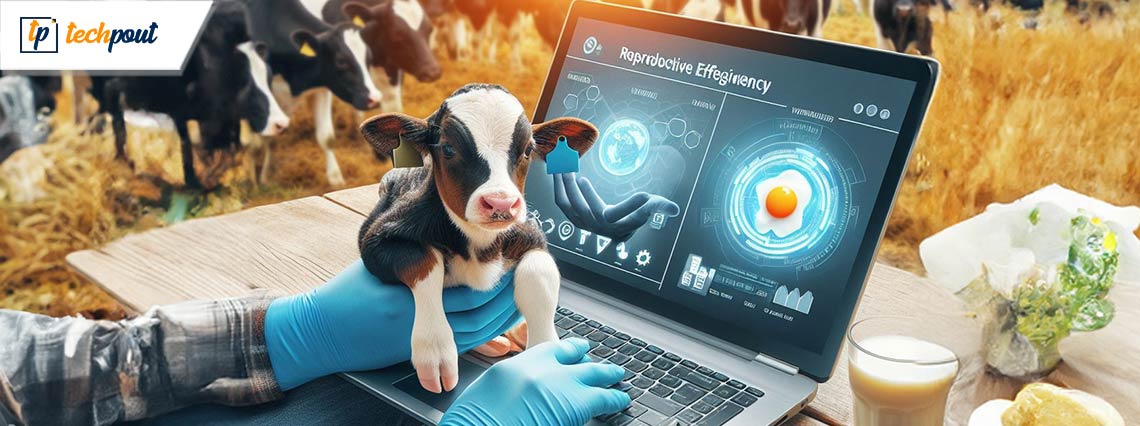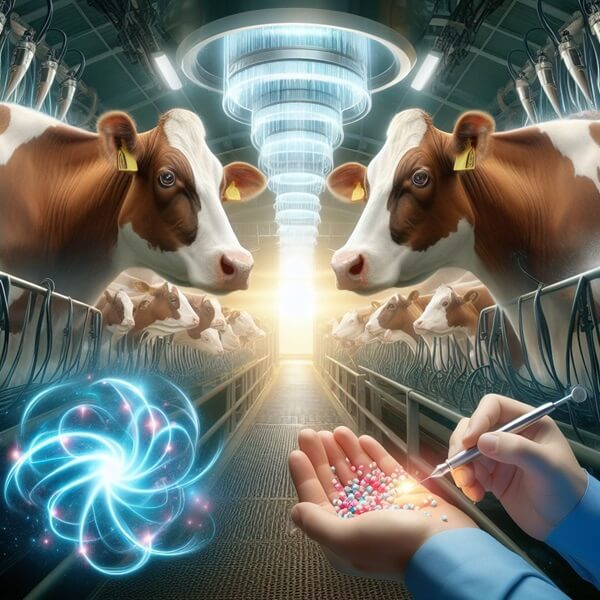Biotechnology in Cattle Reproduction: A Fascinating Journey Through Four Generations

Unveiling the Roots of Modern Animal Reproduction
The history of modern animal reproduction dates back to the Cambridge School of Agriculture in England in the mid-19th century. There, innovative ideas such as multiplying the reproductive potential of animals through artificial insemination (AI) and embryo transfer (ET) came to life, paving the way for a new era in livestock farming.
“Modern animal reproduction was born at the Cambridge School of Agriculture,” says Carlos Augusto Delmindo Filho, a veterinarian and embryologist with extensive experience in cattle reproduction biotechnology. “Since then, the area has evolved by leaps and bounds, boosting productivity and the quality of meat and milk worldwide.”
Evolution in Four Generations
Over time, the control of reproductive processes in animals intensified, giving rise to four generations of biotechnologies:
1st Generation
Artificial Insemination (AI): A pioneering technique that revolutionized animal production, increasing reproductive efficiency and genetic selection. “AI was a milestone,” Delmindo Filho points out. “It allowed the selection of genetically superior animals for breeding, boosting the quality of herds.”
Freezing of Gametes and Embryos: Preserving the genetic lineage of valuable animals and facilitating the transport of biological material. “Freezing has become crucial for the genetic security of livestock,” explains Delmindo Filho. “It allows the preservation of genetic material from exceptional animals for future use.”
2nd Generation
Multiple Ovulation and Embryo Transfer (MOET): A technique that increases the reproductive potential of females, allowing the production of multiple embryos in a single estrous cycle. “MOET was a watershed,” Delmindo Filho emphasizes. “It allowed the production of a greater number of high-quality embryos, boosting the production of genetically superior animals.”
3rd Generation
In Vitro Production (IVP) of Embryos: A milestone in animal reproduction, allowing the fertilization of oocytes outside the female’s body and the production of embryos in the laboratory. “IVP revolutionized cattle reproduction,” Delmindo Filho emphasizes. “It allowed the production of embryos on a large scale, paving the way for the creation of animals with specific characteristics and boosting scientific research.”
4th Generation
Cloning by Nuclear Transfer (NT): Creating genetically identical animals to a specific individual, paving the way for scientific research and applications in medicine. “Cloning is still under development,” acknowledges Delmindo Filho. “But it has the potential to revolutionize medical research and animal production.”
Genetic Engineering: Modifying the DNA of animals to confer desirable characteristics, such as disease resistance or increased milk production. “Genetic engineering opens up a world of possibilities,” says Delmindo Filho. “But it’s important to use it responsibly and ethically.”
Genomic Editing: Editing the DNA of animals with unprecedented precision, opening new frontiers in research and the creation of animals with specific characteristics. “Genomic editing is a powerful tool,” acknowledges Delmindo Filho. “But it’s crucial to use it with care and responsibility.”
Stem Cell Biology: Using stem cells to repair damaged tissues or regenerate organs, with the potential to revolutionize veterinary medicine. “Stem cell biology is a promising field,” Delmindo Filho points out. “It has the potential to cure diseases and improve animal welfare.”

Challenges and Future Horizons
Despite the advances, there are still challenges to be overcome in cattle reproduction biotechnology. Optimizing the efficiency of techniques and reducing costs are crucial aspects for large-scale commercial viability. Ethics and biosafety also require constant attention to ensure animal welfare and environmental protection.
“There is still much to be done,” acknowledges Delmindo Filho. “But the future of animal reproduction is promising, with new technologies under development that promise to further revolutionize the field.”
Brazil as a Protagonist
Brazil stands out as one of the main protagonists in the application of cattle reproduction biotechnology. Brazilian pioneers such as Prof. Enoch Borges de Oliveira Filho and Dr. Assis Roberto de Bem were fundamental to the development of IVP in the country. From the 1990s onwards, companies like Vitrogen Ltda. boosted the commercial application of the technique, making Brazil a world reference in the area.
“Brazil plays an important role in the research and development of cattle reproduction biotechnologies,” says Delmindo Filho. “Our country has the potential to lead innovation in this area and contribute to global food security.”
Contributing to Food Security and Animal Welfare
Cattle reproduction biotechnologies play a fundamental role in ensuring global food security. By increasing the productivity and quality of meat and milk, these techniques help meet the growing demand for food of animal origin. Additionally, the genetic selection of animals that are more resistant to diseases and better adapted to the climate can help in the sustainability of livestock farming.
“Cattle reproduction biotechnology can contribute to a more sustainable and prosperous future for livestock farming,” emphasizes Delmindo Filho. “But it’s important to use it responsibly and ethically, always focusing on animal welfare and environmental protection.”
Conclusion
Cattle reproduction biotechnology has traveled a fascinating path over the past few decades, boosting productivity, product quality, and scientific research. With challenges and opportunities ahead, this promising area has the potential to further revolutionize livestock farming and contribute to a more sustainable and prosperous future for society.


